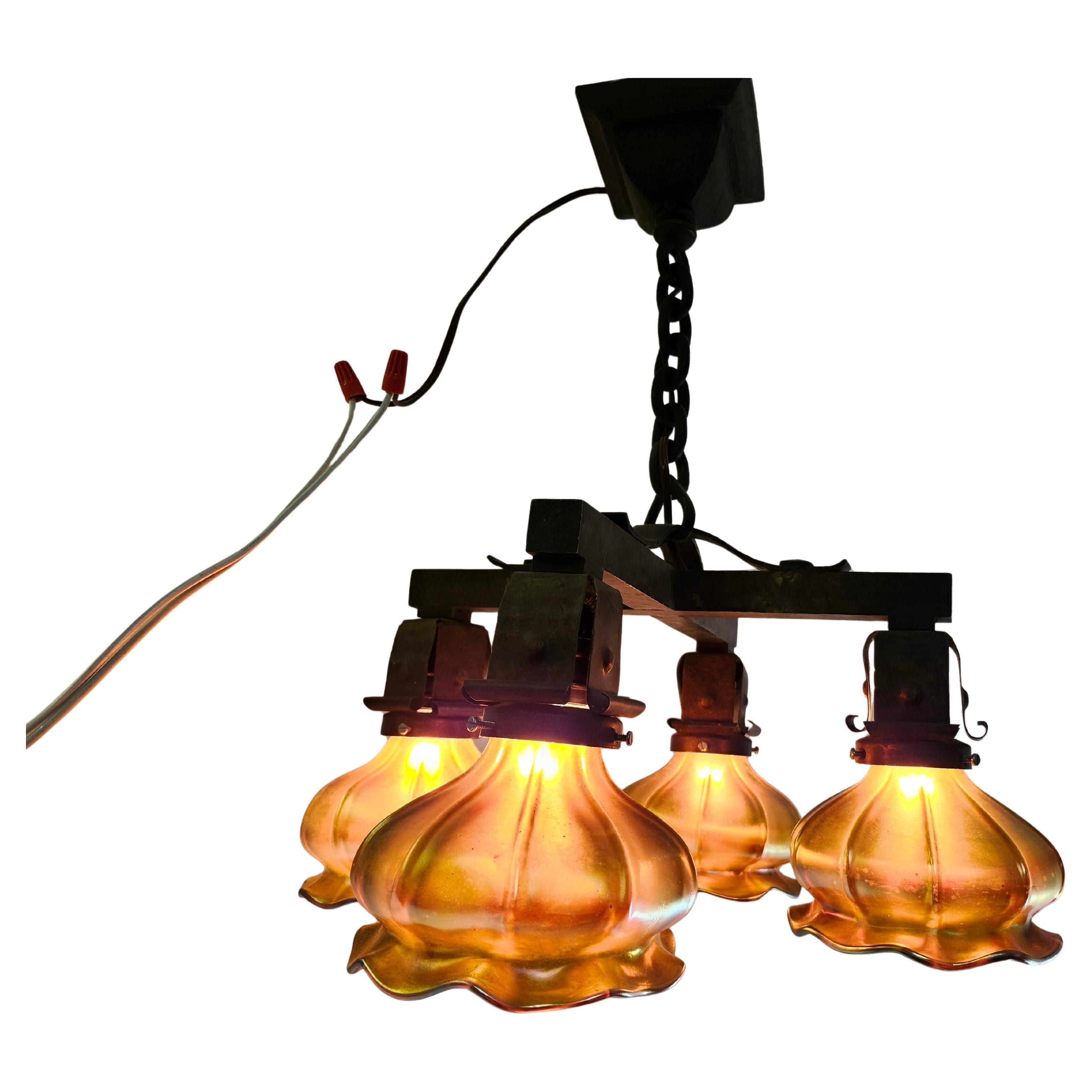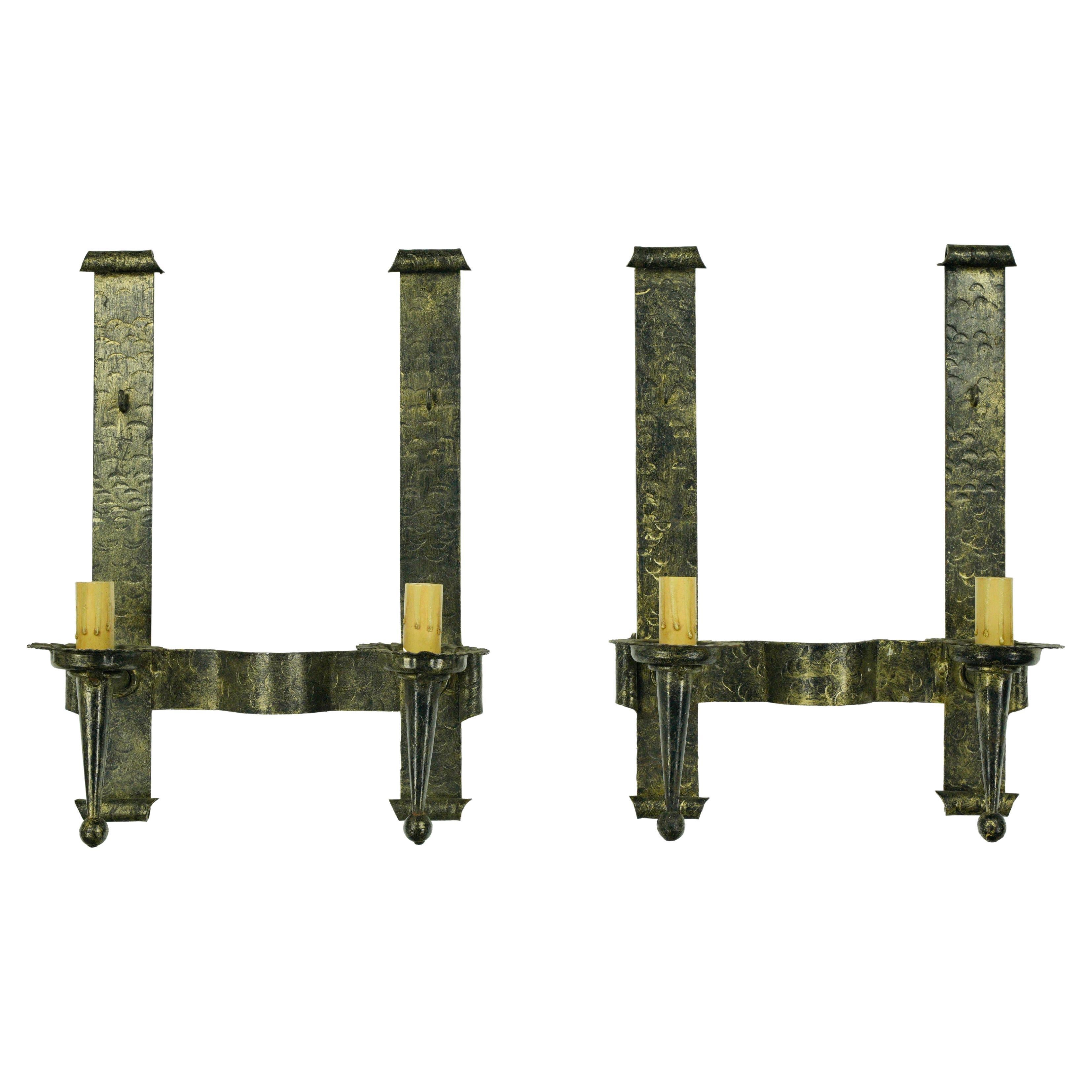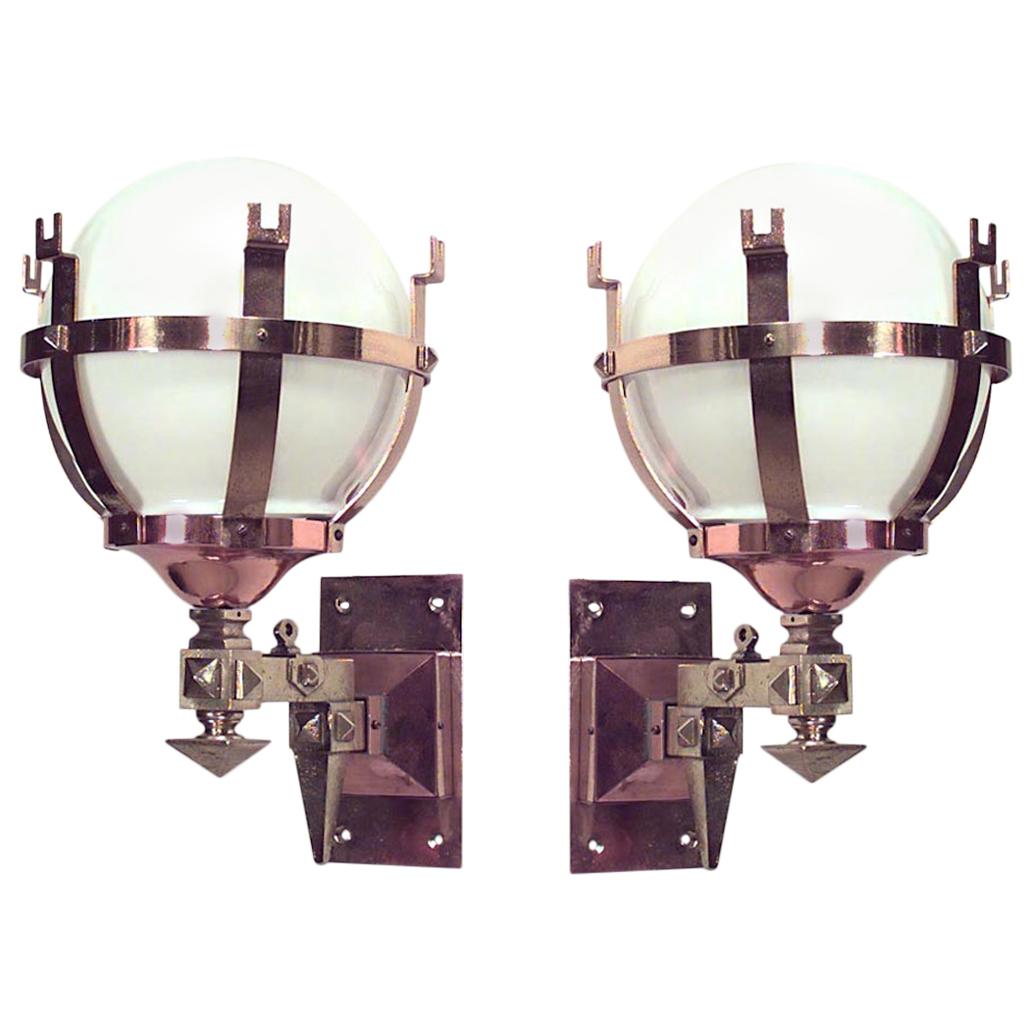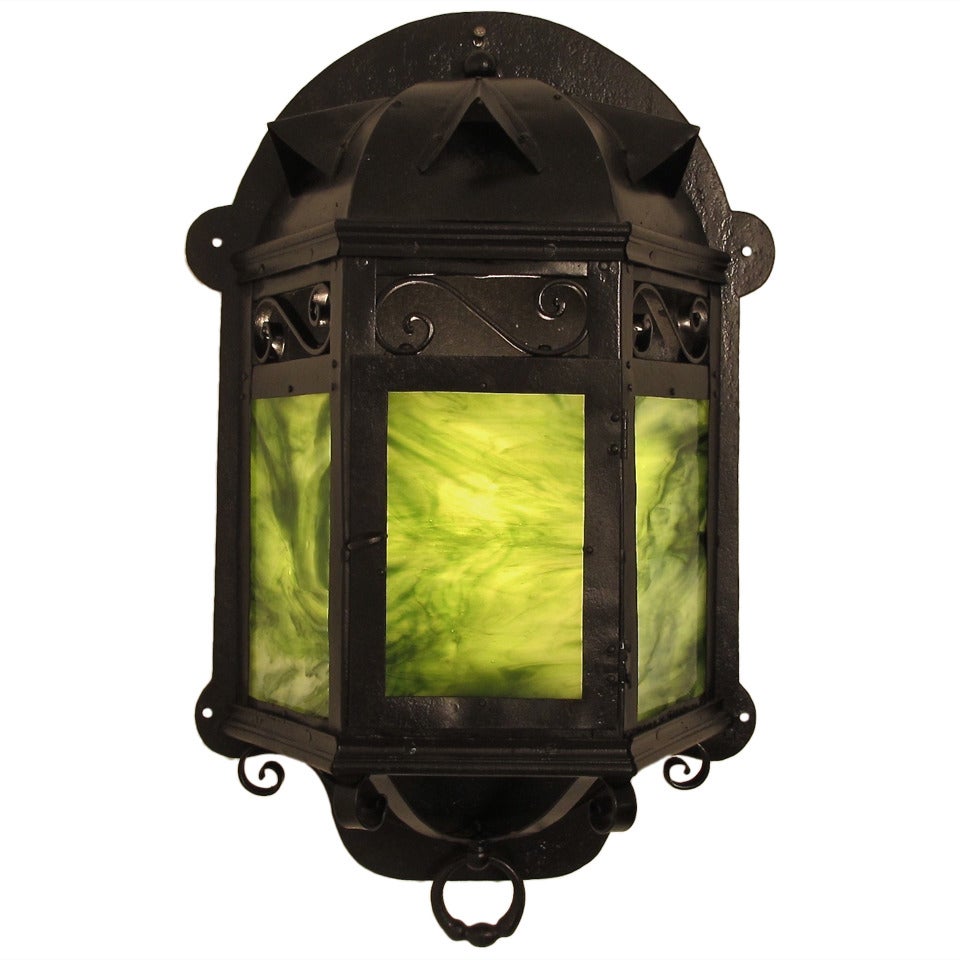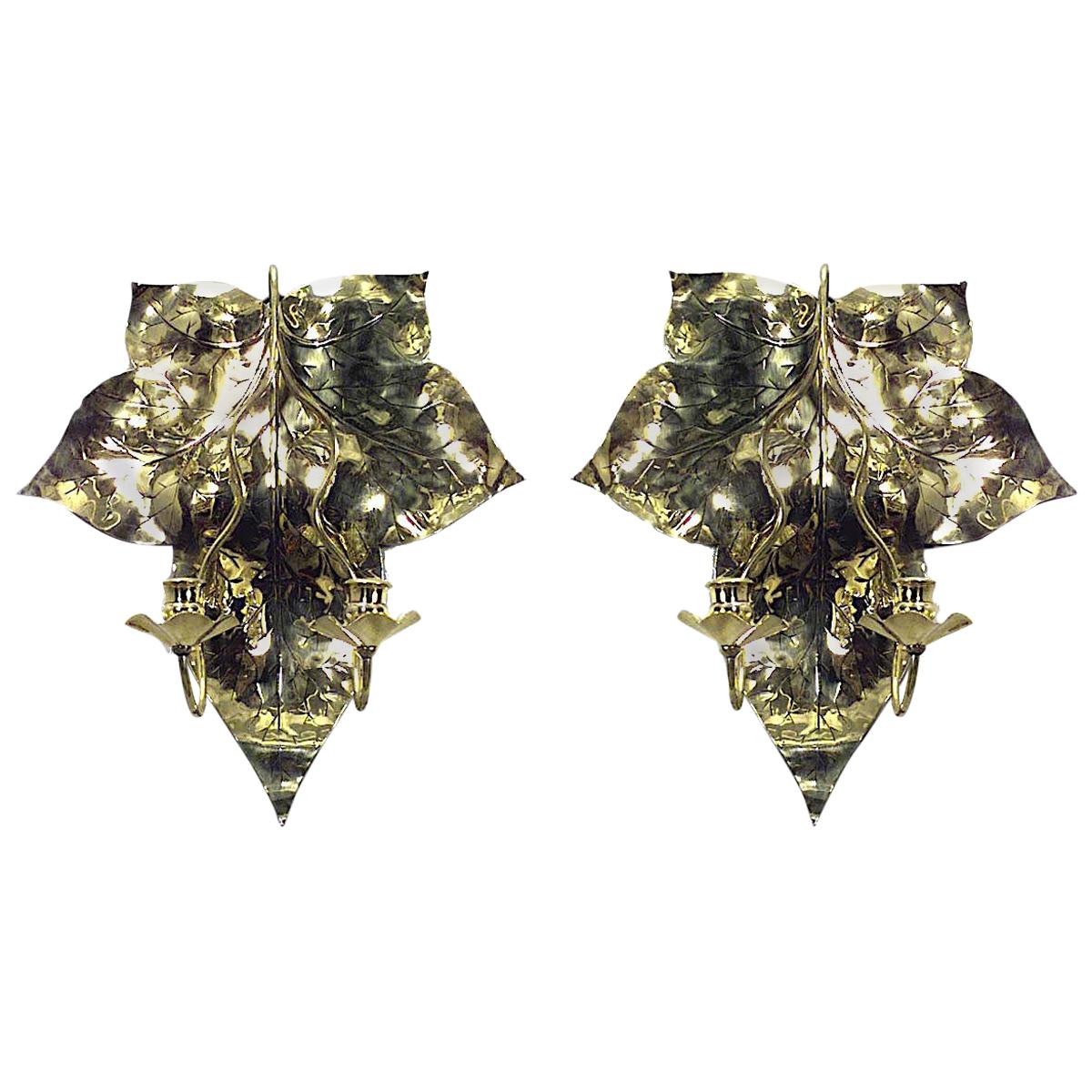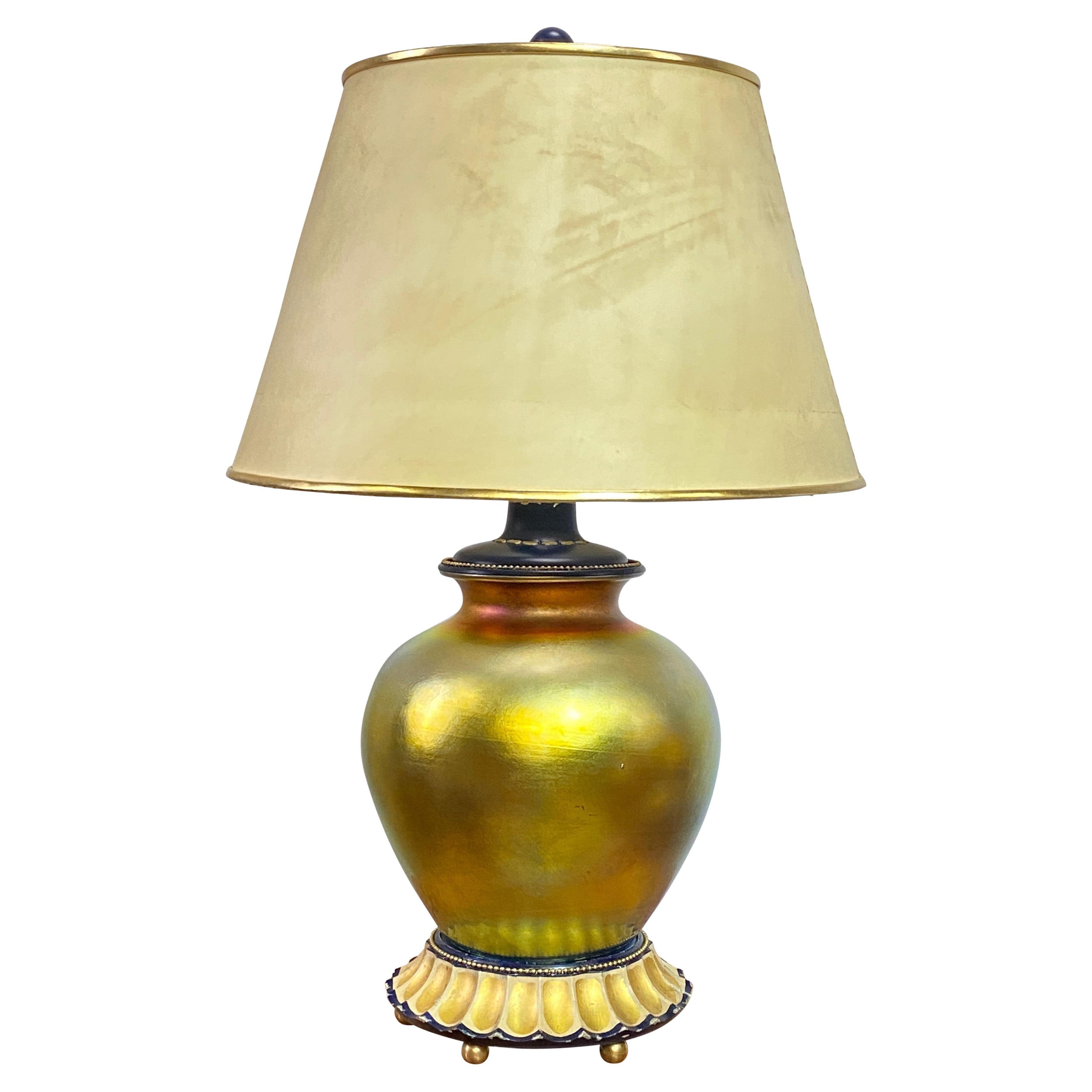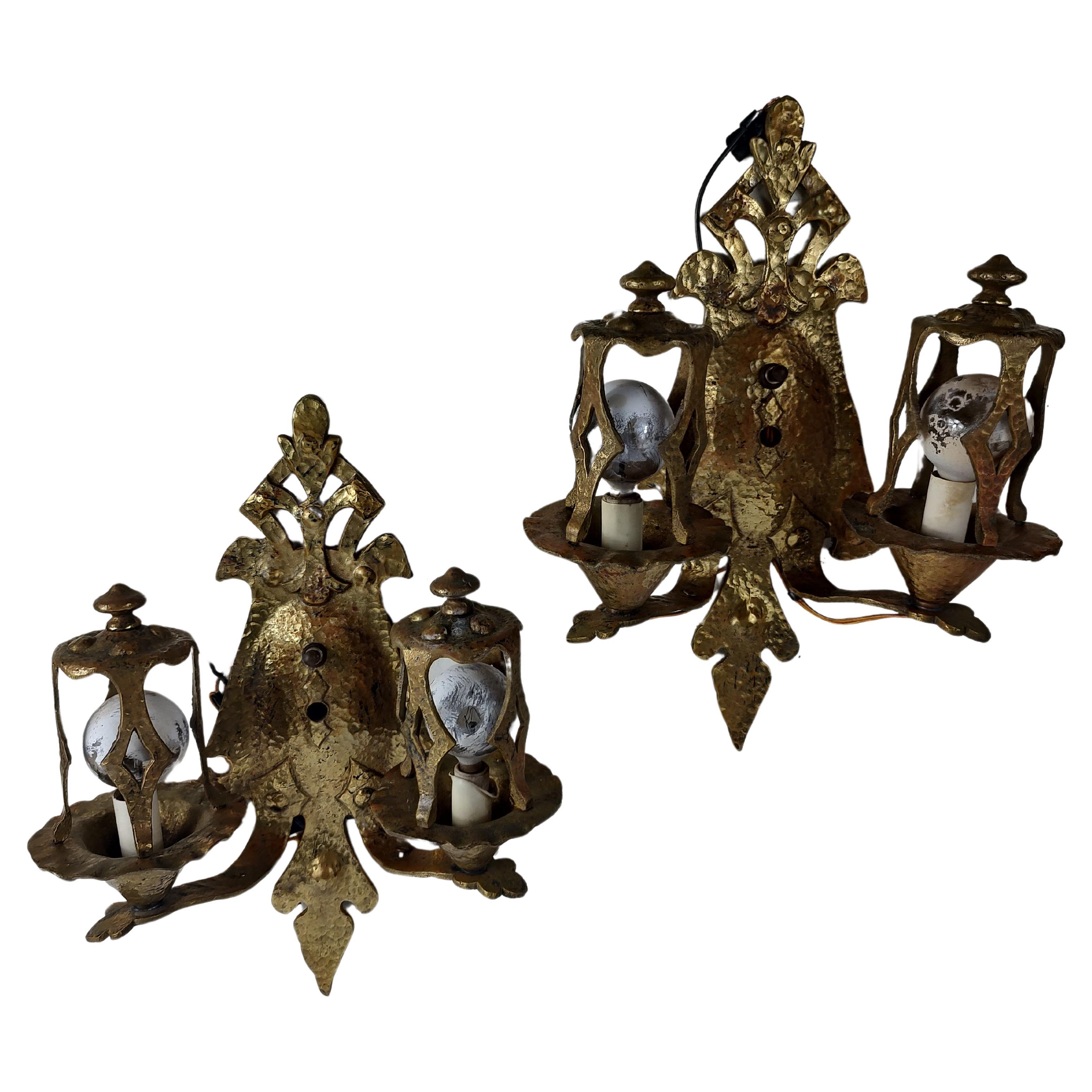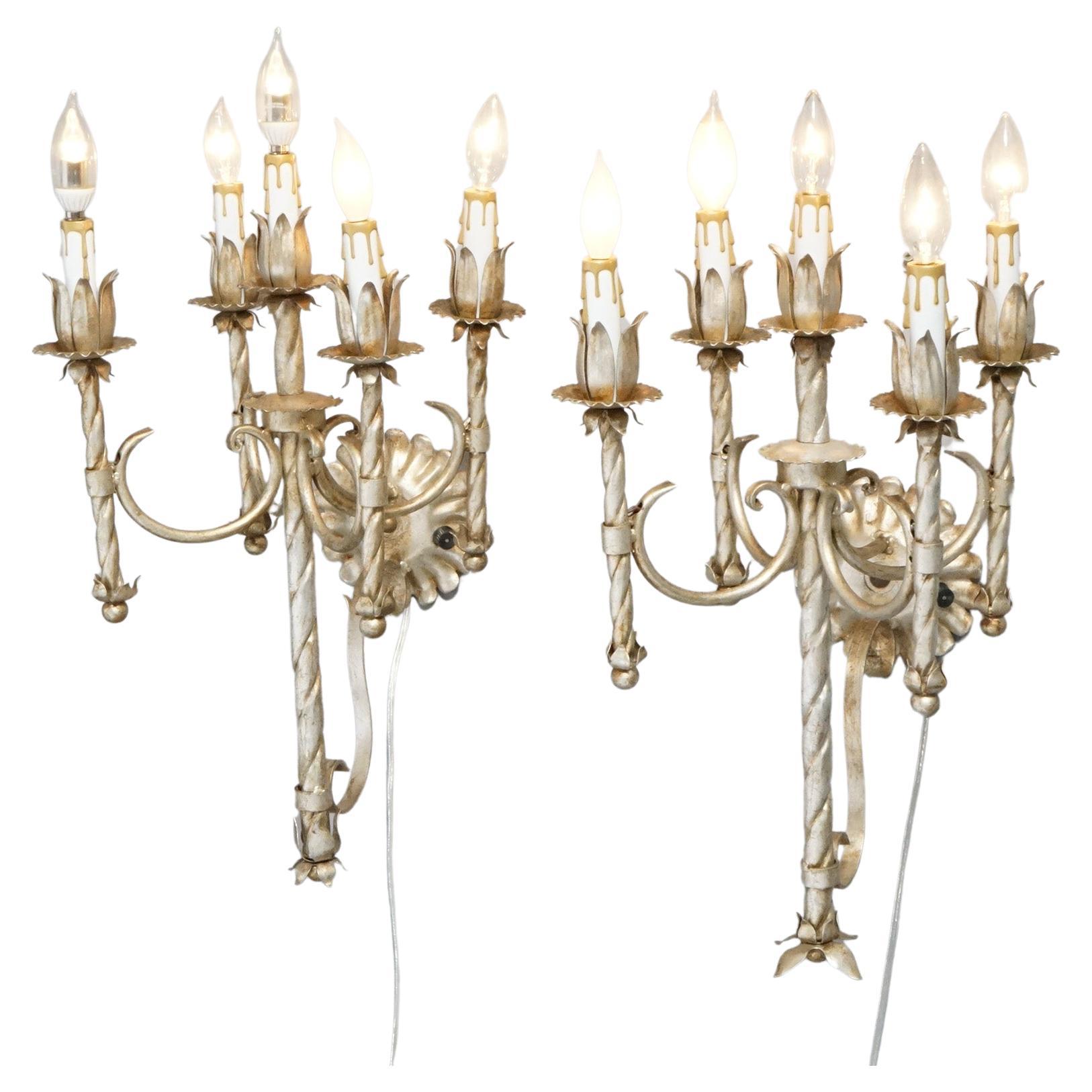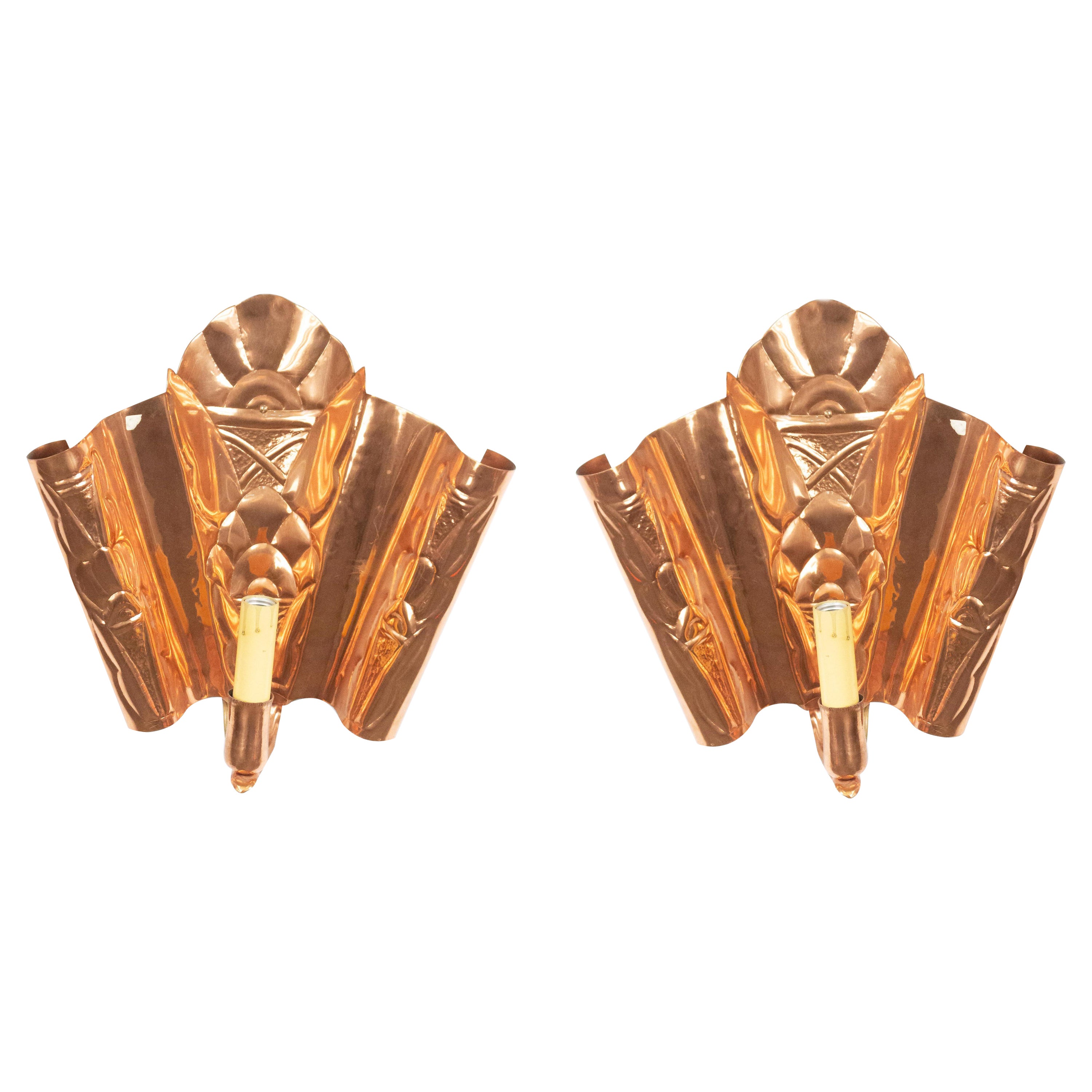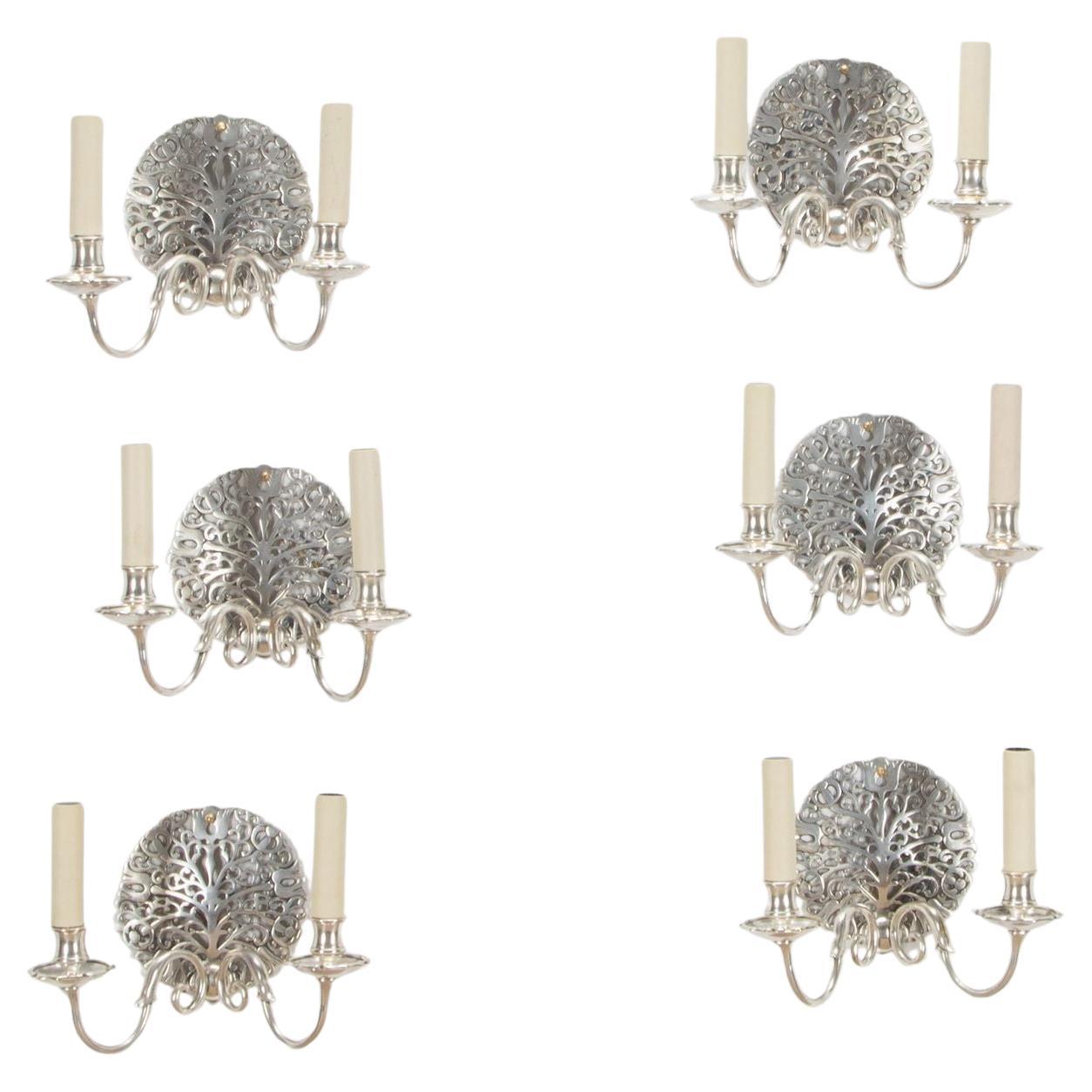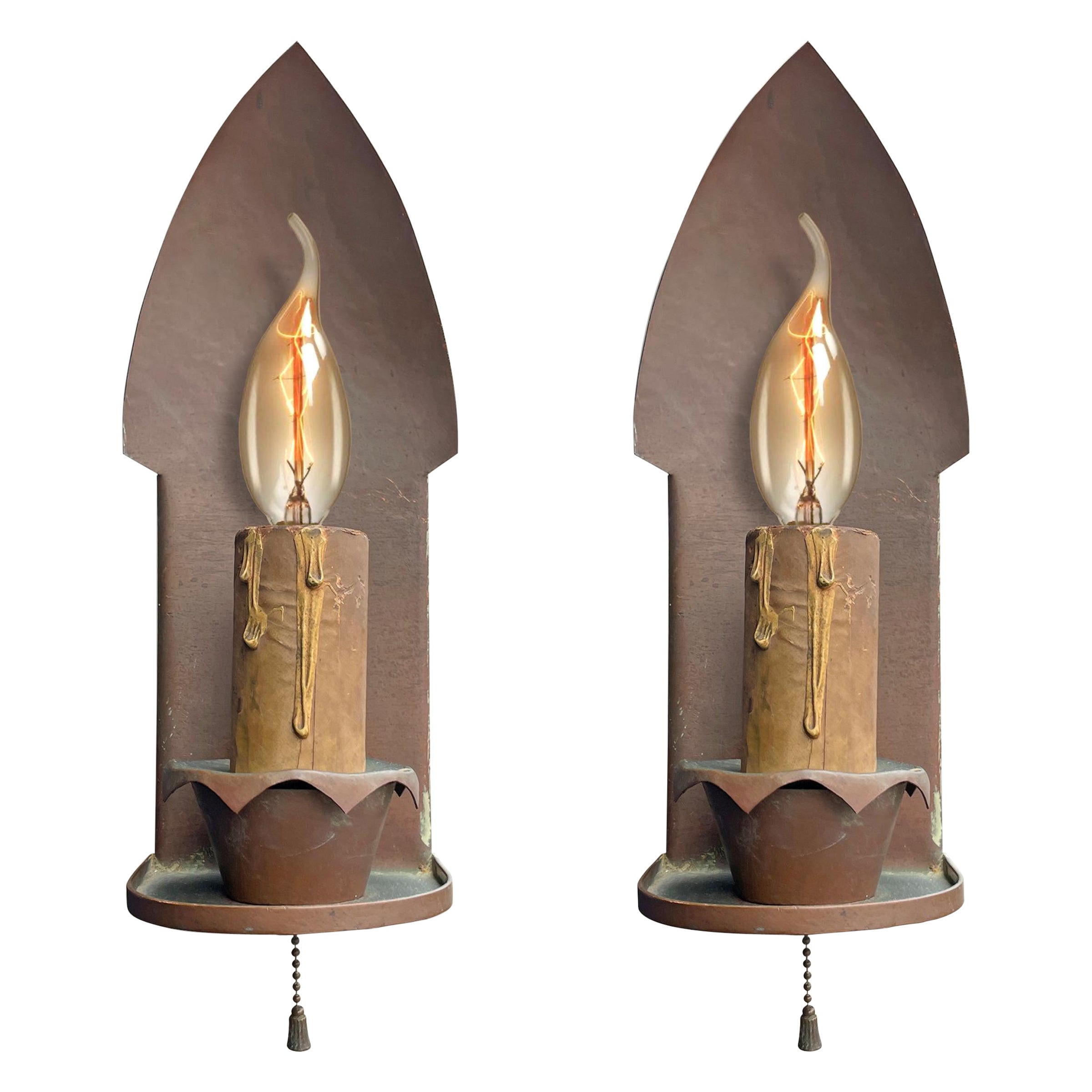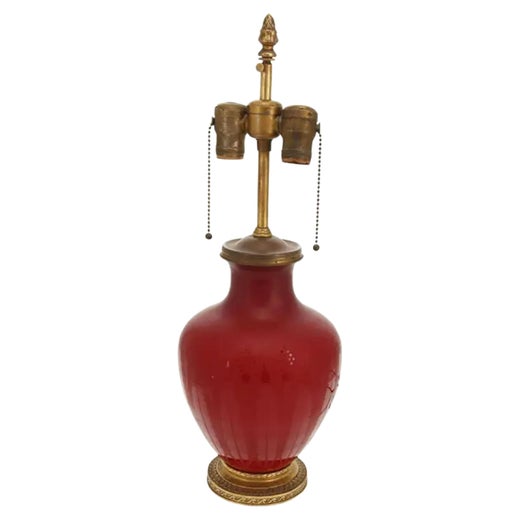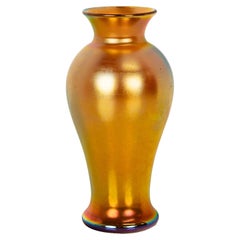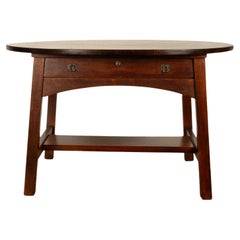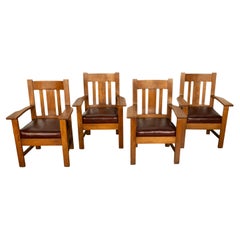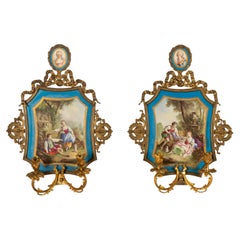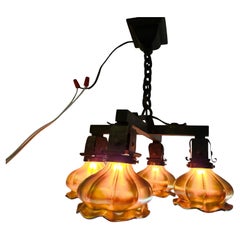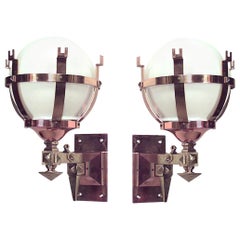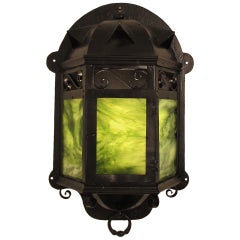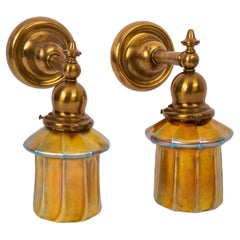
Pair Antique Arts & Crafts Mission Brass Gold Aurene Steuben Glass Wall Sconces
View Similar Items
Pair Antique Arts & Crafts Mission Brass Gold Aurene Steuben Glass Wall Sconces
About the Item
- Creator:Steuben Glass (Maker),Frederick Carder Steuben (Designer)
- Dimensions:Height: 10.5 in (26.67 cm)Width: 5.75 in (14.61 cm)Depth: 8.5 in (21.59 cm)
- Sold As:Set of 2
- Power Source:Hardwired
- Lampshade:Included
- Style:Mission (Of the Period)
- Materials and Techniques:
- Place of Origin:
- Period:1910-1919
- Date of Manufacture:circa 1910
- Condition:Wear consistent with age and use.
- Seller Location:Portland, OR
- Reference Number:Seller: BB-91201stDibs: LU4876132753962
Frederick Carder Steuben
The revered Steuben Glass Works — the most illustrious name in American art glass — was cofounded in 1903 in the town of Corning, New York, by Frederick Carder, a Staffordshire native and alum of British glassmaker Stevens & Williams.
Though the company began to take shape in 1776, Stevens & Williams Ltd. was formally established in 1847 in Brierley Hill in the West Midlands of England by entrepreneurs William Stevens and Samuel Cox Williams.
Carder, who had left school at an early age to work at his parents’ pottery business in Brierley Hill, returned to his education to study technology and chemistry in the evenings. During this period and into the late 19th century, demand was high for attractive, mass-produced glass, with imports providing strong competition for British glassmakers. Determined to produce glass products that were “a cut above the rest,” Stevens & Williams focused on creating unique and innovative glassware of unparalleled quality.
Led by master glassmaker John Northwood, Stevens & Williams became known in the 1870s for its hallmark colored glass. In 1880, the company garnered more attention when Northwood encouraged the 17-year-old Carder to join the firm as a draftsman and designer. Despite Carder’s young age, Northwood recognized his prodigious talent for cameo work, engraving, cutting and intaglio, skills which would contribute to some of Stevens & Williams’ most beautiful glass and crystal pieces.
Toward the turn of the century, Stevens & Williams expanded from a traditional Victorian style to include elements of Japonisme and Art Nouveau, styles that particularly influenced Carder.
Northwood continued to work for the company until his death in 1902. A year later, Carder left for the United States, where he became famous for cofounding Steuben Glass Works with entrepreneur Thomas G. Hawkes.
Carder was a restless experimenter at Steuben, constantly creating new color formulas that resulted in a wide array of hues, from milky jades to his iridescent Aurene shades. A favorite Carder technique was to acid-etch decorative patterns into pieces made of glass layered in different colors. The forms of his vessels were relatively conservative. Most are based on classic Chinese pottery; many display the flowing, naturalistic lines of the Art Nouveau period.
The larger local firm Corning Glass acquired Steuben Glass Works in 1918. The company’s approach to art glass changed radically in the early 1930s, when Corning chemists devised a new type of crystal known as 10M, with perfect clarity and brilliant refractive powers. Corning decided that, henceforth, all Steuben decorative objects, vases, sculptures and other wares would be made from the crystal.
Stevens & Williams continued production until 1967. In 1968, the company’s name was changed to Royal Brierley Crystal.
Carder worked with glass for more than eight decades. An array of his pieces can be found in the collections of the Corning Museum of Glass and the Metropolitan Museum of Art.
Find antique Frederick Carder Steuben serveware, decorative objects and other furniture on 1stDibs.
Steuben Glass
Steuben Glass Works is the most illustrious name in American art glass. Its vividly colored Art Nouveau and Asian-style wares produced in the early 20th century as well as later modernist works rendered in flawlessly clear crystal are objects of striking beauty and delicacy.
The Steuben Glass Works was cofounded in 1903 in the town of Corning, New York, by Frederick Carder, an alum of celebrated British glassmaker Stevens & Williams and a self-taught English chemist and glassmaker. Carder was a restless experimenter, constantly creating new color formulas that resulted in a wide array of hues, from milky jades to his iridescent Aurene shades. A favorite Carder technique was to acid-etch decorative patterns into pieces made of glass layered in different colors. The forms of his vessels were relatively conservative. Most are based on classic Chinese pottery; many display the flowing, naturalistic lines of the Art Nouveau period.
The larger local firm Corning Glass acquired Steuben in 1918. The company’s approach to art glass changed radically in the early 1930s, when Corning chemists devised a new type of crystal known as 10M, with perfect clarity and brilliant refractive powers. Corning decided that, henceforth, all Steuben decorative objects, vases, sculptures and other wares would be made from the crystal.
Art glass was made in two formats: molded and polished abstract sculptures and figurines, or pieces for which artists used Steuben crystal as a sort of canvas. The first such artwork was sculptor Stanley Waugh’s 1935 Gazelle Bowl, a vessel etched with brawny Art Deco animal forms. In later years, Steuben would invite artists that included Henri Matisse, Georgia O’Keeffe and Isamu Noguchi to “paint” in the firm’s crystal.
Steuben glass comes in myriad forms and is available in a broad range of price points. Jewel-toned glasses and tableware from the Carder era include candlesticks marked at $300 and full dinner services for more than $10,000. Small crystal figurines bring around $1,000, while larger sculptures are priced in the neighborhood of $7,000.
Steuben glass, with its impeccable artistry and timeless grace, deserves a place in any collection.
Find antique Steuben glass and other furniture on 1stDibs.
More From This Seller
View AllVintage 1910s American Art Nouveau Glass
Glass
Vintage 1910s American Mission Side Tables
Oak
Vintage 1910s American Mission Armchairs
Leather, Oak
Antique 1880s French Louis XVI Wall Lights and Sconces
Bronze, Ormolu
Antique Early 1900s American Mission Desks and Writing Tables
Bronze
Vintage 1930s American Mission Side Tables
Walnut
You May Also Like
Antique Early 1900s American Arts and Crafts Chandeliers and Pendants
Metal, Bronze, Iron
Early 20th Century Arts and Crafts Wall Lights and Sconces
Steel
20th Century American Mission Wall Lights and Sconces
Copper
Early 20th Century American Arts and Crafts Wall Lights and Sconces
Steel
Early 20th Century English Arts and Crafts Wall Lights and Sconces
Brass
Vintage 1910s European Arts and Crafts Wall Lights and Sconces
Copper, Steel
